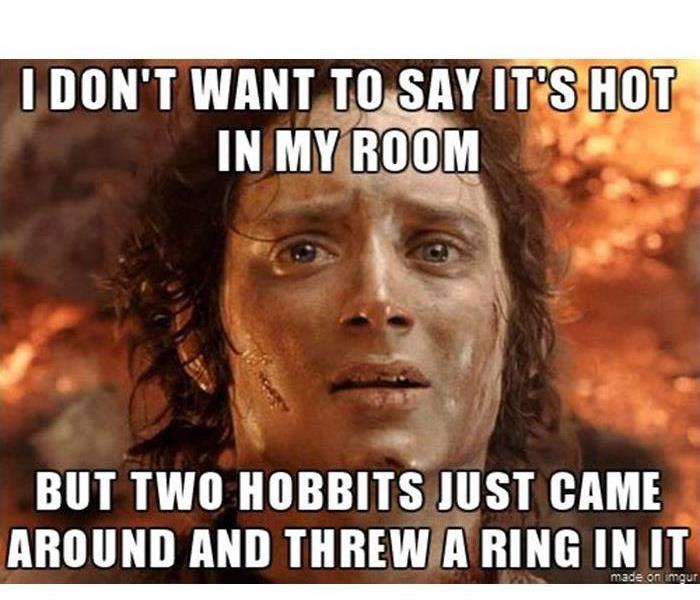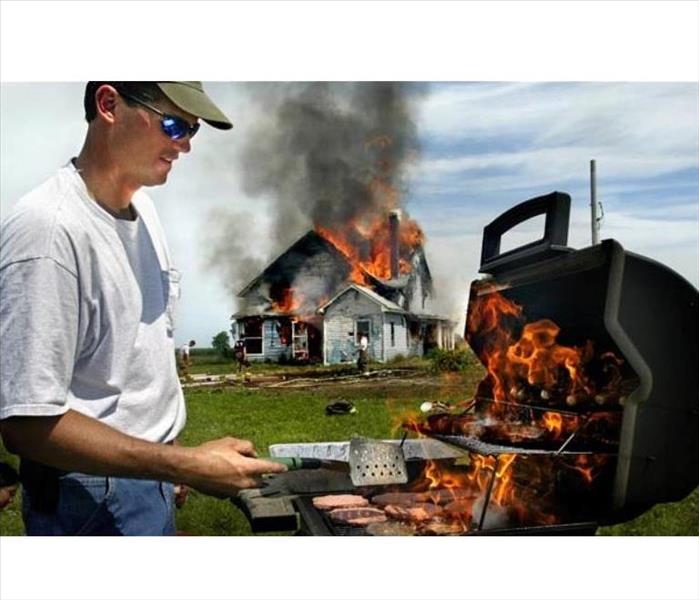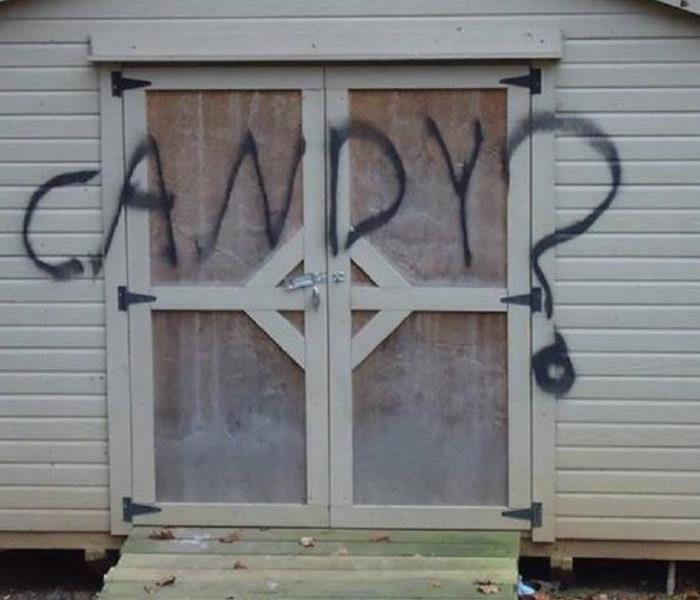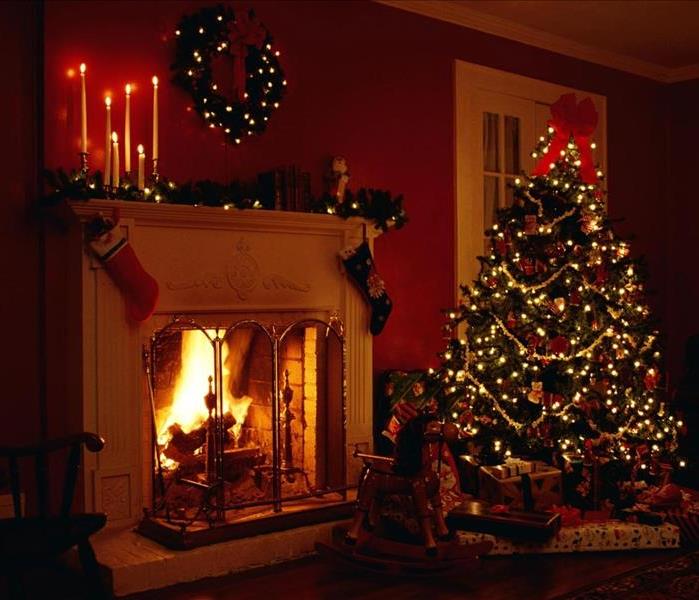Recent Community Posts
HVAC Maintenance Checklist
7/13/2017 (Permalink)
 HVAC Maintenance Checklist
HVAC Maintenance Checklist
The HVAC system makes a critical component of any home. It provides comfortable living to you and your family in summer and winter alike. If your HVAC system doesn’t get regular maintenance and inspection, chances are you are going to face sudden AC shutdown when you need cooling the most or malfunctioning heater during cold breezed winter. Such HVAC problems don’t just cause a great deal of frustration but also huge cost of maintenance or complete replacement. Even worse, certain HVAC problems may result in dangerous home emergency conditions like home fire, short circuit, water flooding, mold growth etc. Following this HVAC maintenance checklist on annual basis ensures that your system works at its peak and keeps you and your family safe and comfortable all through year, while considerably cutting down your energy bills.
Checking the HVAC System Indoor Unit
The indoor segment of your HVAC unit is based on a number of moving components that must work well in unity to deliver effective performance. Include the following in your checklist:
The HVAC air filters must be vacuum cleaned monthly and replaced after every three months. This maintenance prevents dirt and dust to accumulate and clog the filters.
This includes blower motor, blower wheel and housing. Vacuum clean these parts every month to ensure free airflow.
Burner assembly usually needs occasional cleaning with a small vacuum attachment or brush.
Clean the exterior of HVAC unit i.e. its shell, by proper dusting.
Make sure that there is no fire hazard in the interior segment of HVAC unit.
- Combustion Blower Housing
This part can accumulate small debris and lint easily and must be cleaned regularly.
Inspect ductwork leaks that cause air to escape outside. Especially check attics and basements. Sealing and insulating the ductwork helps prevent leakages and ensures optimal performance. Hire a pro for insulation.
These include electrical disconnect box that must be installed with care and have correct power rating and wire connections. Inspect the power rating and wiring on frequent basis.
Make sure that the furnace is attached properly. If there is corrosion, it needs replacement.
If your HVAC system is based on natural gas, inspecting gas leaks on a regular basis is mandatory to prevent potential safety hazards.
If your HVAC system runs on an old motor, you should lubricate it regularly. Also check if fan’s belt is working properly or needs a replacement.
Your HVAC system comes with safety devices that should be in working condition.
Checking the HVAC System Outdoor Unit
Base pan must be checked to ensure that its drains are not blocked.
Cabinet housing should be free from leaves, debris and dirt.
Coils should be checked to clean twigs, leaves and dirt that accumulate in coils and reduce their longevity and efficiency.
The compressor along with its tubing should be check to locate damages. These components must operate within accurate levels of volt draw and amperage, for which properly working wire connections should be ensured.
Check blades and motors for damages. Just like indoor motor, the outdoor motor also needs timely lubrication. Also check belt tension.
The HVAC system’s refrigerant must operate with proper pressure and at correct level. Excessive refrigerant is a wastage while too little means system is not working efficiently.
Your HVAC System Can Save Money
In certain cases, the only way to save your money is to replace the system or its parts, as necessary. Go for energy-efficiency HVAC units and use refrigerants approved by Environmental Protection Agency, since these save up to $115 or more every year. Use a programmable thermostat that typically saves up to $180 a year.
Once you read this checklist, you can start the inspection. If you need a pro, call SERVPRO of East Meadow / Westbury for professional consultation and home restoration services.
Summer home maintenance checklist
6/15/2017 (Permalink)
 Summer home maintenance checklist
Summer home maintenance checklist
Summer is at its peak and is surely going to bring heat, humidity, summer storms as well as heavy energy bills. This is the high time to take benefit of this weather to get your homes in tip-top condition and running smoothly all through the season. It is also the time to tackle various summer related home maintenance tasks. Here is the Summer home maintenance checklist for our readers. Following this checklist not just ensures great home maintenance in summer but also helps to tackle home emergency situations. Moreover, you can also save huge on your energy bills.
Do you know that dirty and dusty condenser coils of your refrigerator that absorb heat inside, can cost you up to $100 or more extra every year?
These coils are placed either on the back of the refrigerator or at the bottom behind kickplate. To clean your refrigerator coils, turn off the fridge’s power and then do vacuum cleaning.
- Check Refrigerator Door Gasket:
Damaged magnetic rubber gasket fitted on refrigerator doors, reduces the fridge’s efficiency. Inspect the cracks and tears on the gasket and if found any, clean with a mixture of water and mild soap. Also, test its seal by closing door on some piece of paper and slowly pull the paper out. If the seal is fine, you will feel resistance, and if not, the paper will be pulled out easily and gasket should be replaced.
Though many manufacturers recommend changing HVAC filters on a monthly basis, this is not the case of families living without allergies or pets. These homes can change filters in 2-3 months. Dirty filters; however, should be replaced immediately as clogged filters not only affect equipment’s efficiency and increase energy bills but also let the contaminated air in. As a simple maintenance technique, you can vacuum clean the filters yourself every month to prolong filters’ life.
Summer rains are unpredictable. Are you sure that rain water will flow away from your house? In case if water doesn’t flow out or penetrates into the foundation, check your gutters that may require cleaning. Also, take the help of professionals to raise the pavement around your home so that water drains away from the home easily.
Inspect all your toilets and faucets to detect leaks. If the water pressure is poor in the faucet, the aerator might need a fix.
You can use a number of ways to clean your kitchen sink disposal. One of the methods is to pour some vinegar in an ice tray and let vinegar freeze. Then run these ice cubes through sink disposal. This not only freshens it but ice also sharpens the blades.
If you have never cleaned the range hood filters before, here is the tip. Take degreaser, available on all auto parts store, and mix it with lukewarm water. Keep the filter in the mixture for 5-10 minutes and then wash them off. The filters are good to go.
This is probably the most neglected items in many households. We have always recommended keeping portable fire extinguishers in the home to handle home emergency fires. In few of our last posts, we have also highlighted how to use it. Always inspect your fire extinguisher on a periodic basis. Check if the gauge is showing adequate pressure and there is any sign of damage or wear and tear. Also, check for the expiry date, though most of the fire extinguishers usually have a long lifespan.
While our checklist is brief and may not contain many other items, yet it lists the most essential areas to look for as a part of your summer home maintenance plan. For consultation and home emergency restoration services, you can always call SERVPRO of East Meadow / Westbury's expert technicians, available 24/7.
Prepare your AC System for summer
5/15/2017 (Permalink)
 Don't get caught in the heat this summer
Don't get caught in the heat this summer
Long Island homeowners are now gearing up for summer, a season for cookouts, BBQs, beach time and a lot of outdoor activities. Along with preparing for your outdoors, a part of your preparation should also include maintenance of your AC system to help gain relief from hot and humid days. On hot sunny days, you would never want to turn the switch of your AC on and find that it is not working. Since Air Conditioners remains idle throughout winter, it is highly recommended to prepare your AC system for summer. Since unused AC accumulates a lot of debris, leaves and dust, its timely maintenance is required before you give crank up the cool air.
Here are some great tips to prepare your AC System for summer.
- Clear debris around coils and condenser
Clearing debris accumulated around the condenser unit is the most important and best way to make your system ready for use. A clean condenser helps the AC unit trap heat from the air easily. However, before you start clearing away debris, make sure the unit is turned off. Remove clutter and debris from inside and close to condenser unit. You should do this every month while the unit is in operation.
- Clean interior ductwork
Just like debris needs to cleared from outside, you must clear it from the interiors of your homes or buildings as well. A bigger portion of the ductwork might not easily be seen or accessible since it is inside the ceilings and walls; therefore, a complete cleaning often needs to be performed by home by professional cleaning company with the proper duct cleaning equipment like SERVPRO of East Meadow / Westbury.
- Air filters maintenance & replacement
Air filters are the most important components for any HVAC system, since the air entering the system passes through these filters for purification. Dirty or clogged air filters can easily damage the AC system and even lead to severe allergy symptoms and respiratory conditions. A filter may seem fine for a while; however, new filters should be installed at the beginning of every season and a few times thereafter until fall.
If you are doubtful and need expert consultation, schedule an appointment with SERVPRO of East Meadow / Westbury clean team professionals today to develop a plan of action. You may be required to replace or clean your filter more frequently than you think. Many professionals suggest replacement at least twice in every three months.
- Check fan belts
Another important tip to prepare your AC system for summer is to check its fan belts and circulation motors. Belts make an important part of HVAC system and their proper functioning is necessary to ensure AC’s working.
- Proper Insulation
The insulation around the coolant pipe is often overlooked by many households. This insulation is important for making your system function properly. If your existing insulation is torn or damaged, replace it immediately.
- Don’t use humidifier
If your furnace contains a humidifier, turn it off. An AC system lowers the temperature of your building by removing humidity present in the atmosphere. An active humidifier will just cause excessive moisture that can lead to mold and mildew problems.
- Check AC thermostat
Once you set the temperature down on the thermostat and it reaches its “Cooling” state, the AC should start providing ample cooling. If it doesn’t, it’s the time to call a pro. Thermostat must be functioning well to ensure proper working of your AC.
- Turn Off your Heating System
Often overlooked, make sure that your heating system is turned off or lowered to 50 degrees to ensure that you are not wasting fuel, energy and hours by triggering the thermostat and heating a home once the temperature dips below 70 degrees.
Scheduling a proper checkup with a licensed HVAC technetium is never a bad idea. Check with your HVAC fuel or installation service provider to see if you contract includes annual maintenance or seasonal inspections. Doing so could save you lots of money, time and frustration.
Are you BBQ Season Ready? Safety First - Tips on how to have a safe BBQ season
5/10/2017 (Permalink)
 Long Island BBQ Fail
Long Island BBQ Fail
Summer is calling for delicious BBQ sessions. BBQ is indeed our summer tradition as well as a great pastime. However, it can also be accompanied by a major risk of fire. You would be surprised to know summer BBQs are the source of a number causalities every year. United States Fire Administration estimated that every year, outside grills cause over 6,000 fires, more than 5 fatalities & 170 injuries, with at least $35 million in property damage and loss. In this article, we have come up with a few tips on how to prep your home for safety and to prevent fires due to summer BBQs. These tips have been proposed in the light of preventive measures issued by the New York State Office of Fire Prevention and Control.
- Distance between Home & the Grill
The farther this distance, the better. Generally, a 10 feet distance is advised to be kept between your grill and home. This takes into an account the home sections such as porches, garages, and carports. Avoid wooden overhangs for grills since the fire can flare up in the structure. This is applied to gas as well as charcoal grills.
- BBQ Grill Cleaning
Grills must be cleaned on a regular basis. Without proper cleaning, fat and grease may accumulate all over the grill, providing fuel for the fire. Keep in mind that grease is the major cause of flare-ups and burnt steaks!
- Examine gas leaks
Always keep a close eye on gas leaks. If you are using a gas grill to BBQ, make sure there aren’t any leads in the tank, hose or burner. You can do this by rubbing your grill’s hoses and joints with a solution containing liquid dish soap and water in 1:1 ratio. Then open the grill lid and the turn gas on. Any bubbling will indicate the location of any potential leaks. Since gas leaks can easily catch a fire, it’s imperative that you replace any faulty parts, such as; hoses, valves, burners, joints or the entire grill itself. And NO, DUCT TAPE WON’T FIX THE LEAK. ;)
- Place a fire extinguisher nearby
A high-quality fire extinguisher is a helpful tool for handling emergency fire situations. Every household must keep at least one or two fire extinguishers on hand. In one of our previous posts, we explained how to make sure your fire extinguishers are ready for operation. If you are still not sure how to properly use a fire extinguisher, call SERVPRO of East Meadow / Westbury, Long Island’s leading home emergency restoration services provider, right away. Firefighters have reported that many fire casualties are the result of people trying to extinguish fires on their own, rather than calling 911 right away.
- Keep furniture and decorations away
Watch your furniture and accessories. It is better to keep all of these at a significant distance from the grill. Decorations and accessories such as pillows, umbrellas, hanging baskets look great but they are also fuel for a fire. In addition, today’s décor is cheaply made from synthetic fiber, which can ignite much faster.
- Water Spray bottle
Keeping a handy spray water bottle with your grill can help tackling minor flare ups and prevents them turning into a larger fire. As soon as you see any flare up, you can instantly tame it with a quick spray of water. It helps tame pesky children as well! The great thing is that water doesn’t spoil your delicious food, so you can use it without any fear of ruining your dinner.
Along with these tips to follow, keep in mind some of the don’ts to prevent summer BBQ fires, like don’t turn the gas on while the lid is open, don’t leave your grill unattended, don’t overload grill with food and never use grills indoor.
In the case of any fire, water or mold emergency on Long Island or for expert consultation, contact the pros at SERVPRO of East Meadow / Westbury 365/24/7.
Are Your Fire Extinguishers Ready For A Fire?
3/7/2017 (Permalink)
In view of increasing number of home fires on Long Island, fire extinguishers have become a vital part of home safety plans. Electrical appliances, especially heating equipment, are finding more room in our life than ever before, and the result is that cases of home fire are being encountered on a more frequent basis. The inappropriate use of these appliances and negligence for their timely maintenance are the real culprits, which are considered as the most significant causes of home fires. In order to avoid huge losses that may potentially result in emergency situations, it is a MUST to have high-quality and properly maintained fire extinguishers installed in your homes.
The Placement
Every homeowner must have a safety plan that emphasizes on both preventing fires and taking actions if it occurs. Fire extinguishers must be included in this plan. A multi-purpose fire extinguisher must be placed on each floor of your home and in kitchen, garage and corridor. For fire extinguishers to be helpful, it is necessary that these are readily accessible when needed. In home fire situation, you don’t have time to move the stuff to get to the fire extinguisher. Even the minor flames and fumes take few seconds to spread all over and turn into a massive home fire.
In addition, fire extinguishers must be placed in highly visible locations. Consider placing a sign along with your fire extinguisher so it can be seen from a distance. Make sure that your fire extinguisher is maintained on a regular basis and is properly pressurized, so that it works efficiently in case of emergency.
How to use fire extinguisher
Many home owners have fire extinguishers installed in their homes, yet they don’t know how to use them properly. Home fires are emergency situations making it difficult for anyone to think properly. We have seen many cases on Long Island where home fire incurred heavy loses even in presence of fire extinguishers. This is all due to improper use of the equipment.
If you are using the fire extinguisher, stand back 6 to 8 feet and follow the acronym P.A.S.S:
- Pull the pin
- Aim at base of the fire
- Squeeze handle
- Sweep side to side
Most importantly, train your family members on how to use a fire extinguisher, so that they aid in home fire emergency situations.
The Replacement
One thing required to make sure that your fire extinguisher serves as a life safer in home emergency fire situations is proper inspection and regular maintenance. You must know whether your fire extinguisher is still working or need to be replaced. Here are some tips:
- Though most of the extinguishers work for 5 to 15 years, you should check the expiration date with the manufacturer. Also, check the label from time to time.
- Inspect the pressure gauge every month. If the needle of the gauge falls inside the green area, it means your extinguisher is still working. If it is falling anywhere else, it’s time to replace it.
- If your extinguisher doesn’t have inspection sticker, replace it immediately, since each extinguisher must have this sticker, which shows the record of maintenance checkups.
- Check for wear and tear, which may include ripped nozzles, racked hoses, missing lock pins, broken handles etc. If any of these conditions happens, replace your extinguisher.
Your safety and your family’s safety is the topmost priority in the event of a home fire. Materal items can be replaced - lives are lost forever. Hence, don’t think twice about installing a fire extinguisher in your homes to tackle home emergency situations. For information about fire extinguishers types, installation and maintenance, the ways to use them and their replacement, call our home restoration emergency professionals at SERVPRO of East Meadow/Westbury right away for complete service and guidance.
Halloween Sparks Most Vandalism Claims of the Year
10/19/2016 (Permalink)
Did you know the Highway Loss Data Institute (HLDI) stats are alarming when it comes to the high number of Vandalism claims that are filed on Halloween? In fact, Halloween had the highest number of Vandalism claims for any day by 81 percent. The average cost per claim on Halloween was $1,660, which is about 9 percent higher than the annual daily average cost per claim. If your house happens to get Vandalized this upcoming Halloween just call SERVPRO OF EAST MEADOW/WESTBURY for help! Not only can we remove spray-painted graffiti from exterior walls, we can also clean driveways, walkways, asphalt, metals, wood, glass, plastic, and masonry. We can offer the following services:
- General cleaning and graffiti removal
- Brick, stone, and concrete cleaning
- Odor Removal and Deodorization
- Debris removal
- Water Damage Restoration
- Fire Damage Restoration
- Mold Damage Restoration
It's Snow Time!!!
1/19/2016 (Permalink)
We couldn't get away from Old Man Winter all season. It appears we're in line to receive a bit of a whopper this weekend.
Check out this link from ABC News 7 Accuweather regarding the pending snow storm. Be safe out there!
http://abc7ny.com/weather/accuweather-forecast-bitter-cold-monday;-snow-threat-looms-for-weekend/1162142/
Your local 10 day weather forecast
12/22/2015 (Permalink)
http://www.weather.com/weather/today/l/USNY1575:1:US
Holiday Fire Risk Increases After Christmas Day
12/22/2014 (Permalink)
Most homeowners are aware holiday decorations should be used with care. Each year, statistics tell the story of the fire danger resulting from frayed wires, proximity to heat sources, and lights left on unattended. But disaster recovery specialist SERVPRO of East Meadow / Westbury wants homeowners to know that the danger of fire caused by holiday decorating, and by Christmas trees specifically, actually increases after the holiday. Citing research from the National Fire Protection Association (NFPA), the fire and water damage experts at SERVPRO of East Meadow / Westbury say while four out of five Christmas tree fires happen in December and January, the 10 days with the highest average number of fires were all after Christmas Day.
The American Christmas Tree Association quotes Nielsen research that says Americans purchased 21.6 million live Christmas trees in 2011. That number is significant because, according to the NFPA, Christmas trees remain the number one culprit in holiday fires. Forty-three percent of Christmas tree fires happen in December, but January is close behind, claiming 39 percent—numbers that demonstrate the danger of allowing Christmas trees to dry out during and after the holiday season. Tragically, Christmas tree fires are particularly deadly, claiming on average one life in every 40 fires compared to an average of one death per 142 total reported home fires.
We encourage homeowners who choose to decorate with live Christmas trees to be diligent about watering their trees both before and after the holidays. When a Christmas tree dries out, it takes only a single spark from the fireplace or a draft that blows a candle flame too near to turn your holiday celebration into a disaster.
As the holiday season moves into full swing, SERVPRO reminds homeowners to take common sense precautions based on a clear understanding of the potential danger to help prevent holiday traditions from turning into a holiday nightmare. For more fire prevention tips and information about fire and water damage restoration services, please visit www.SERVPROEastMeadowWestbury.com
For Immediate Service, Call SERVPRO in Westbury, NY
3/6/2014 (Permalink)
 Property Emergency Team
Property Emergency Team
SERVPRO of East Meadow and Westbury provides 24-hour emergency service and is dedicated to being faster to any-sized disaster on Long Island. We can respond immediately to your emergency and have the expertise to handle your restoration or cleaning needs.
24-Hour Emergency ServiceFaster to Any-Sized DisasterHighly Trained Restoration TechniciansA Trusted Leader in the Restoration IndustryLocally Owned and OperatedAdvanced Restoration and Cleaning EquipmentContact Us Today!
516-334-2927




 24/7 Emergency Service
24/7 Emergency Service






